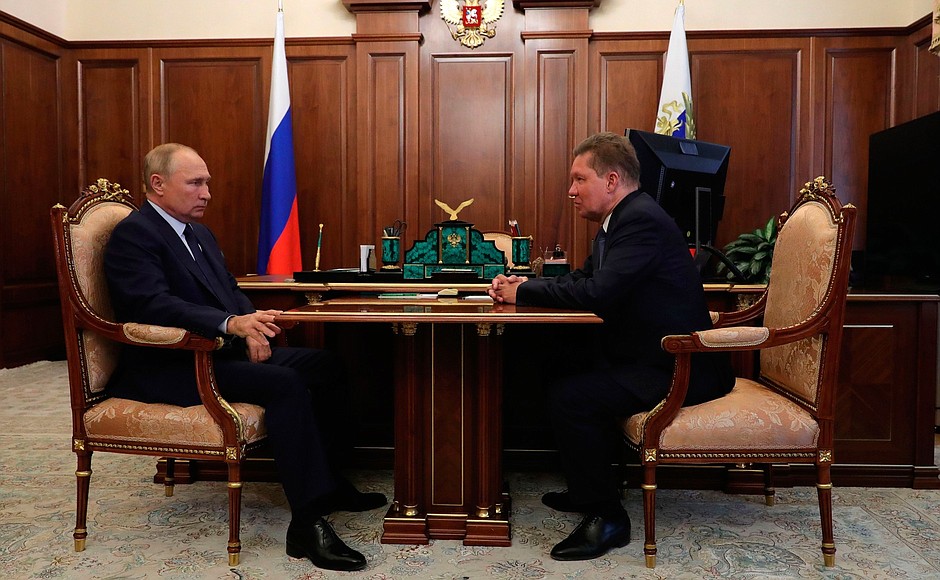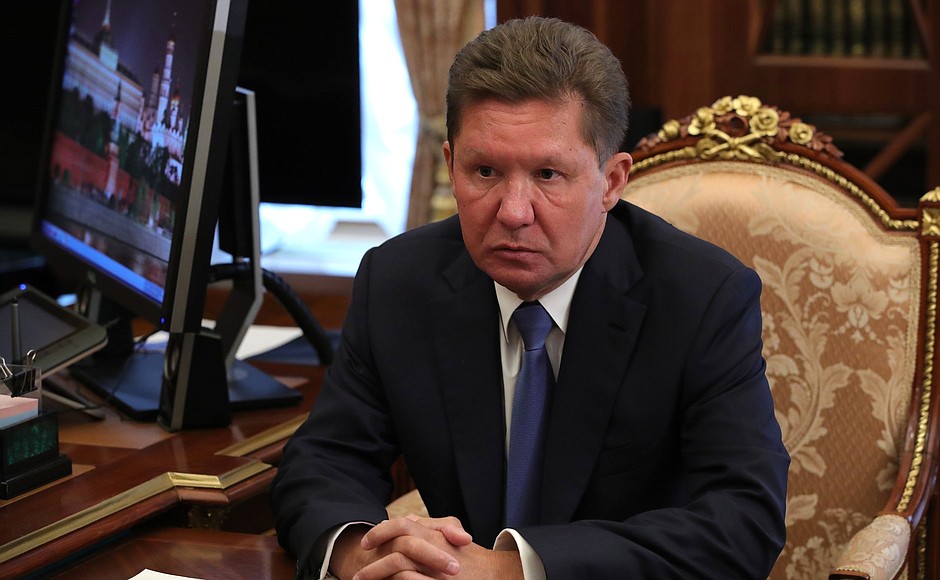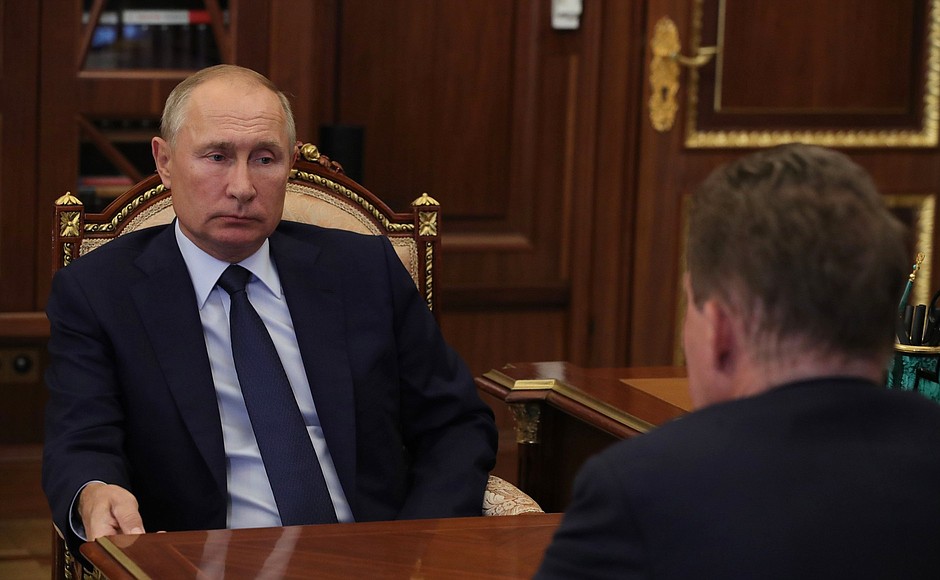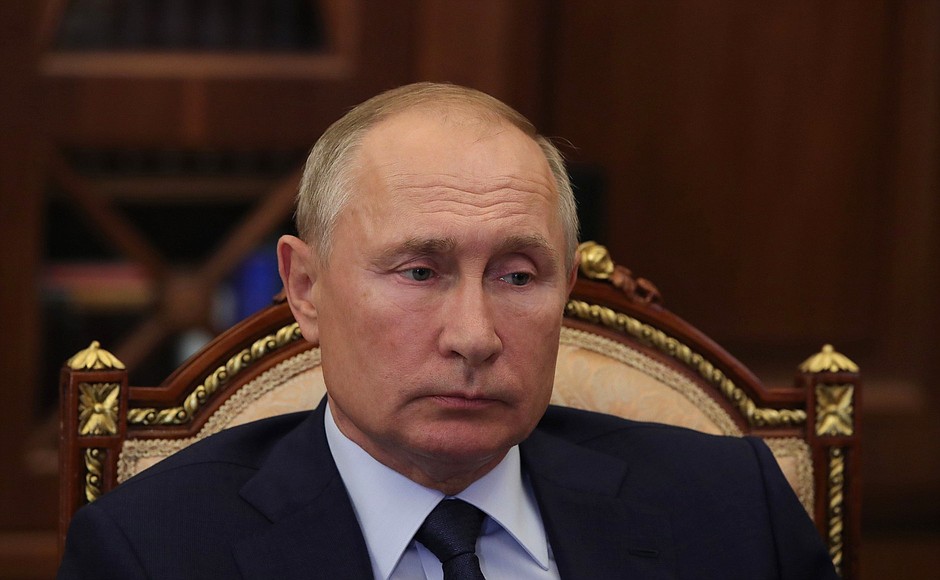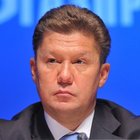President of Russia Vladimir Putin: Mr Miller, there are many issues to discuss, as usual. I would like you to start with two: preparations for the heating season and the gasification plans.
Gazprom CEO Alexei Miller: Mr President,
Preparations for the autumn-winter period are strictly on schedule. By the beginning of the gas withdrawal period, the operational gas reserves in Russia’s underground storage facilities will amount to 72.3 billion cubic metres. We will maintain the all-time high daily rate of gas offtake at 843.3 million cubic metres. Gazprom will pump nearly 9 billion cubic metres of gas into underground storage facilities in Europe.
These steps will allow Gazprom to fully meet consumer needs during the winter.
Gas supply and gasification programmes in the regions are among our most important social projects. In 2020, we increased the volume of financing coming from Gazprom by more than 160 percent. Gazprom’s investment will amount to 56 billion rubles, which is 22 billion rubles more than in 2019. A total of 2,350 kilometres of gas pipelines will be constructed to supply gas to 319 towns and villages, and 410 boiler plants will be built. The country’s level of gasification will stand at 71.4 percent at the end of the year. Gasification will be fully completed in 11 regions.
We are now close to finishing work on drafting and signing five-year gas supply and gasification programmes with 67 regions. This is part of our next five-year plan. This five-year plan provides for nearly tripling the amount of funding provided by Gazprom for gas supply and gasification programmes to 526.1 billion rubles. A total of 24,400 kilometres of pipelines is to be built over these five years; 3,632 towns and villages will be connected to gas supply, and the gasification level will reach 74.7 percent.
At the same time, it is noteworthy that in the next five years, by the end of 2025, another 24 Russian regions will have completed gasification, bringing the total to 35 regions of the Russian Federation.
To date, we have signed five-year programmes with 14 Russian regions and will complete this work in the next two months; so that documents will be signed with all Russian regions.
The upcoming five years will be characterised by highly pronounced social features, and this is the main difference from the work we have carried out in previous years. And, of course, as you have told us, we will now focus most on the gasification of villages.
Vladimir Putin: Mr Miller, the Accounts Chamber reported there were certain problems related to synchronisation between Gazprom’s work and regional and municipal authorities. How do you see this situation? While implementing the gasification programme, I mean.
Alexei Miller: Yes, Mr President. You know there is a proposal that perhaps should be discussed: to make Gazprom the operator of the gas supply and gasification programmes. Gazprom could fully build branch pipelines; build inter-settlement gas pipelines, and build – currently the regions are building them – intra-settlement gas pipelines and the so-called “last mile gas pipelines.”
Vladimir Putin: To consumers and households?
Alexei Miller: To land plots and households.
Without doubt, firstly, this would speed up gasification. Secondly, this would allow Russian regions to allocate a large share of their budgets to the thermal power industry and boiler rooms. This approach would make it possible to redistribute budgetary funds among the regions in a certain way and would definitely make it possible to plan, as they say, from the end user. In such circumstances, Gazprom would not create excess capacities, in particular, in branch pipelines. Unfortunately, branch pipeline capacity is not used to the full, that is, we have excess capacities.
Vladimir Putin: Well, let me instruct the Government to work together with us.
Alexei Miller: Yes.
Vladimir Putin: Agreed.
What other issues do we have?
Alexei Miller: Gazprom's current output numbers are fully in line with the market demand and the macroeconomic situation in general. Gazprom enjoys strong liquidity, high confidence and reliability in its operations. The situation has got back to normal over the past several months.
In August, Gazprom supplied 5 percent more gas to Russian consumers than in July, and exported 12 percent more.
If we compare gas supplies to non-CIS countries in August 2020 with August 2019, the volume of gas supplies exceeded 16.3 billion cubic metres, which is a significant amount. It is safe to assume that Gazprom’s gas supplies to non-CIS countries in 2020 will be part of the top five all-time supply volumes.
Vladimir Putin: What about our eastern project, Russia – Mongolia – the People's Republic of China?
Alexei Miller: Mr President, you issued a directive to start front-end engineering and design for the Power of Siberia 2 project. We started it and, at the same time, started working on the Mongolian section.
As part of a videoconference with the Prime Minister of Mongolia [Ukhnaagiin Khurelsukh], a memorandum of intent to create a special-purpose company was signed. The company is to conduct a feasibility study for this route and to choose the gas pipeline route. We will discuss the results of this work in the first quarter of 2021.
Once implemented, the Power of Siberia 2 project will allow us, firstly, to connect gas transmission capacities in the west with those in the east. Mr President, you have been setting the goal of creating a unified gas supply system for some time now. This presents new opportunities for delivering gas to Eastern Siberia and the Trans-Baikal area. This is a new export corridor with a capacity of up to 50 billion cubic metres of gas and an opportunity to deliver gas from Yamal not only to the European market, but to the Asian market as well.
Vladimir Putin: Good.
<…>
